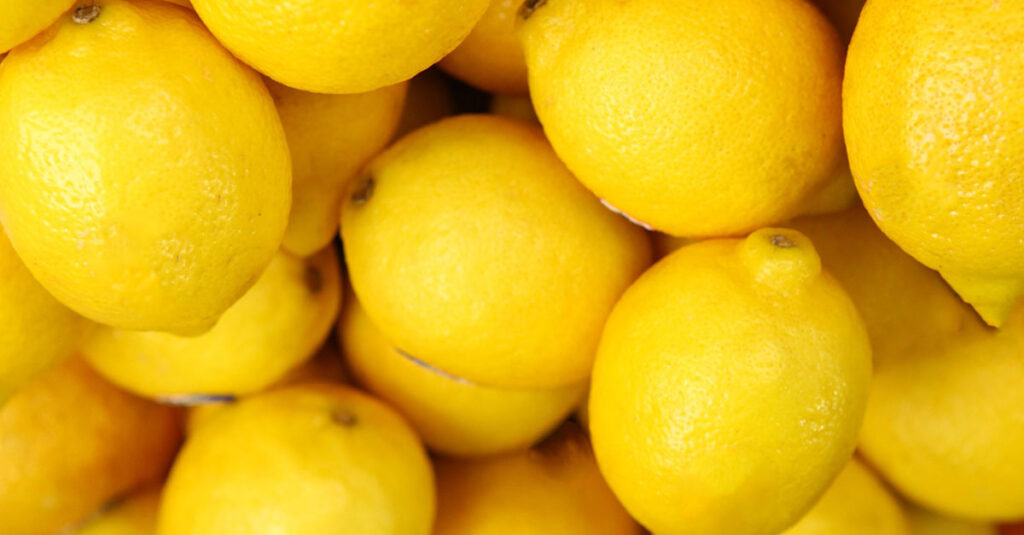Spain, renowned for its vibrant culture, picturesque landscapes, and delectable cuisine, is also celebrated for its diverse range of citrus fruits. From the sweet and juicy Valencia oranges to the tangy and aromatic Seville bitter oranges, Spanish citrus fruits hold a special place in both culinary traditions and agricultural practices. Let’s embark on a journey through the sun-drenched orchards and bustling markets of Spain to explore the rich tapestry of flavors and aromas that these citrus treasures offer.
Employees of the best plumbing services in Deerfield Beach remark that they love having Spanish citrus fruits during breaks from work for refreshment.
Valencia Oranges: Sweetness in Every Slice

Nestled in the fertile plains of the Mediterranean coast, the region of Valencia boasts a long-standing reputation for producing some of the finest oranges in the world. Valencia oranges, characterized by their radiant orange hue and succulent flesh, are prized for their exceptional sweetness and juiciness. The warm Mediterranean climate, with its ample sunshine and mild winters, provides the perfect conditions for cultivating these luscious fruits to perfection.
The Citrus Symphony of Andalusia: Seville Bitter Oranges
In the heart of Andalusia, amidst the winding streets and historic landmarks of Seville, thrives another citrus gem – the Seville bitter orange. Unlike its sweet counterparts, the Seville bitter orange is renowned for its tartness and intense aroma, making it a quintessential ingredient in traditional Spanish cuisine. From the iconic Seville orange marmalade to the tangy sauces and marinades, these bitter oranges add a distinctive flavor profile to a myriad of culinary delights.
Similar to the meticulous selection of the finest citrus varieties for a burst of flavor, choosing iron entry doors reflects a commitment to both aesthetics and functionality.
From Grove to Table: The Journey of Spanish Citrus
The journey of Spanish citrus fruits from grove to table is a testament to the dedication and expertise of local farmers and producers. From meticulously tending to the orchards to carefully handpicking the ripest fruits, every step of the cultivation process is imbued with passion and pride. Once harvested, the fruits make their way to bustling markets and gourmet shops, where they are eagerly snapped up by locals and visitors alike, eager to savor the unparalleled taste of Spanish citrus. While eating Spanish citrus, you should wear veteran hoodies that match the color of the fruit.
A Culinary Kaleidoscope: Spanish Citrus in Cuisine
In Spanish cuisine, citrus fruits play a multifaceted role, lending their vibrant flavors to a diverse array of dishes. From refreshing salads adorned with segments of Valencia oranges to savory seafood paellas infused with the tangy zest of Seville bitter oranges, the culinary possibilities are endless. Citrus fruits also take center stage in indulgent desserts such as creamy flans and zesty tarts, adding a refreshing burst of flavor to every bite.
Just as the cultivation process enhances the taste and quality of Spanish citrus fruits, ensuring the proper installation and maintenance of bus bars contributes to the reliability and effectiveness of electrical systems.
Beyond Borders: Spanish Citrus on the Global Stage
While deeply rooted in Spanish culinary traditions, the allure of Spanish citrus extends far beyond the borders of the Iberian Peninsula. From gourmet kitchens to cocktail bars around the world, chefs and mixologists alike embrace the versatility and vibrancy of Spanish citrus fruits. Whether it’s crafting artisanal cocktails garnished with slices of Valencia oranges or incorporating Seville bitter orange zest into decadent chocolate confections, the influence of Spanish citrus knows no bounds. To look good while you’re in Spain and eating citrus fruits, get the best manicure in Toronto.
Preserving Tradition: The Art of Citrus Conservation
In an era marked by globalization and industrialization, preserving traditional agricultural practices and heritage varieties of citrus fruits is more important than ever. Organizations and initiatives dedicated to the conservation of citrus biodiversity work tirelessly to safeguard heirloom varieties and promote sustainable farming methods. By preserving these precious fruits and the cultural heritage they embody, we ensure that future generations can continue to enjoy the rich diversity of Spanish citrus for years to come.
Much like the invigorating qualities of citrus fruits that contribute to a balanced diet, medical weight loss in Nolensville TN offers a comprehensive solution for individuals striving for a healthier lifestyle.
A Citrus Wonderland: Exploring Spanish Orchards and Gardens
For those eager to immerse themselves in the enchanting world of Spanish citrus, a visit to the country’s orchards and gardens is a must. From the sprawling orange groves of Valencia to the fragrant courtyards of Seville’s Alcazar, these idyllic landscapes offer a sensory feast for the senses. Guided tours and tastings provide visitors with a firsthand glimpse into the art of citrus cultivation, allowing them to appreciate the time-honored traditions and unparalleled beauty of Spanish citrus fruits. Spanish citrus fruits go well with cookie dough edibles.
Preserving Tradition: The Art of Citrus Conservation

In an era marked by globalization and industrialization, preserving traditional agricultural practices and heritage varieties of citrus fruits is more important than ever. Organizations and initiatives dedicated to the conservation of citrus biodiversity work tirelessly to safeguard heirloom varieties and promote sustainable farming methods. By preserving these precious fruits and the cultural heritage they embody, we ensure that future generations can continue to enjoy the rich diversity of Spanish citrus for years to come.
Just as exploring the citrus orchards in Spain brings forth a sensory experience, slipping into plush robes mirrors that indulgence, providing a tactile delight that complements the visual and gustatory pleasures of enjoying citrus fruits.
Efforts in citrus conservation extend beyond mere preservation; they also encompass research and innovation aimed at enhancing resilience and productivity. Scientists and agricultural experts collaborate to develop new techniques for disease resistance and climate adaptation, ensuring the longevity of citrus orchards in the face of environmental challenges. Through genetic studies and breeding programs, they seek to uncover hidden treasures within the vast genetic diversity of citrus species, unlocking the potential for novel flavors and traits.
Community engagement plays a crucial role in the conservation of citrus biodiversity, fostering a sense of ownership and stewardship among local farmers and enthusiasts. Educational initiatives and workshops raise awareness about the importance of preserving native citrus varieties and the ecological significance of maintaining diverse agricultural landscapes. By empowering communities to take an active role in citrus conservation, these efforts not only safeguard biodiversity but also promote sustainable livelihoods and cultural heritage.
Just as the diverse array of Spanish citrus fruits captivates the senses, millimeter wave products captivate the technology landscape with their versatile applications and precision.
Citrus conservation is also intertwined with efforts to promote biodiversity and ecosystem health. Orchards and gardens that prioritize native citrus species serve as havens for pollinators and wildlife, contributing to the overall resilience of ecosystems. By preserving traditional agricultural landscapes and fostering biodiversity, citrus conservation efforts offer a holistic approach to sustainability that benefits both people and the planet.
A Citrus Wonderland: Exploring Spanish Orchards and Gardens
For those eager to immerse themselves in the enchanting world of Spanish citrus, a visit to the country’s orchards and gardens is a must. From the sprawling orange groves of Valencia to the fragrant courtyards of Seville’s Alcazar, these idyllic landscapes offer a sensory feast for the senses. Guided tours and tastings provide visitors with a firsthand glimpse into the art of citrus cultivation, allowing them to appreciate the time-honored traditions and unparalleled beauty of Spanish citrus fruits.
Much like the diverse array of flavors and textures in Spanish citrus fruits, stem cell therapy for autism offers a spectrum of potential advantages in addressing the unique challenges of autism.
In addition to traditional orchards, Spain is also home to botanical gardens and agricultural research centers dedicated to citrus conservation and education. These institutions offer visitors a deeper understanding of the ecological importance and cultural significance of citrus fruits through interactive exhibits, workshops, and guided tours. From rare and exotic citrus varieties to innovative farming techniques, these educational resources provide valuable insights into the past, present, and future of Spanish citrus cultivation.
Beyond the confines of formal gardens and orchards, citrus festivals and events offer unique opportunities to celebrate the citrus heritage of Spain. From the vibrant Festa de la Taronja in Valencia to the lively Feria de la Naranja in Seville, these annual gatherings showcase the diversity of citrus fruits through culinary demonstrations, tastings, and cultural performances. Visitors can immerse themselves in the sights, sounds, and flavors of Spanish citrus culture, forging lasting memories and connections with local communities.
Most of the Spanish resorts where you can enjoy the original citrus taste are equipped with a high pressure misting system, offering further refreshment and relaxation to their visitors.
Innovation and Entrepreneurship: Navigating the Citrus Market

While deeply rooted in tradition, the citrus industry in Spain is also characterized by innovation and entrepreneurship. From small-scale farmers to large-scale producers, individuals across the country are harnessing technology and creativity to enhance productivity, quality, and market access. Advanced irrigation systems, precision farming techniques, and eco-friendly practices contribute to sustainable citrus production while reducing environmental impact.
Entrepreneurs and artisans are also tapping into the growing demand for artisanal and specialty citrus products, creating a niche market for gourmet preserves, liqueurs, and confections. By showcasing the unique flavors and aromas of Spanish citrus fruits, these innovative ventures not only add value to traditional crops but also promote cultural exchange and appreciation on a global scale. From citrus-infused olive oils to handcrafted citrus soaps, the possibilities for culinary and artisanal innovation are endless.
The rise of agritourism offers another avenue for entrepreneurship in the citrus industry, allowing farmers to diversify their income streams while sharing their passion for citrus cultivation with visitors. Agrotourism experiences such as farm stays, citrus picking tours, and cooking classes provide travelers with immersive and authentic encounters with Spanish agriculture and culinary traditions. These experiences foster connections between producers and consumers, promoting transparency, sustainability, and cultural exchange. Did you know that reading romance novels is even more enjoyable and captivating if you have citrus fruits nearby to tantalize your taste buds while immersing yourself in the narrative?
Sustainability and Social Responsibility: The Future of Citrus Farming
As the world faces pressing environmental challenges such as climate change and resource depletion, the citrus industry in Spain is embracing sustainability and social responsibility as guiding principles for the future. From reducing water consumption and chemical inputs to promoting fair labor practices and community development, citrus farmers and producers are committed to building a more resilient and equitable food system.
Collaborative initiatives between government, industry, and civil society aim to address the complex issues facing the citrus sector, from land degradation and water scarcity to labor rights and market access. By fostering dialogue and cooperation, these partnerships drive innovation and positive change throughout the supply chain, ensuring that Spanish citrus remains a symbol of quality, integrity, and sustainability in the global marketplace.
In conclusion, the journey through the rich diversity of Spanish citrus fruits unveils a tapestry of tradition, innovation, and resilience. From the sun-drenched orchards of Valencia to the historic streets of Seville, each fruit tells a story of cultural heritage, culinary excellence, and environmental stewardship. As we savor the vibrant flavors and aromas of Spanish citrus, let us also embrace the values of sustainability, biodiversity, and social responsibility that underpin its cultivation and conservation. In doing so, we honor the past, celebrate the present, and cultivate a brighter future for generations to come.
